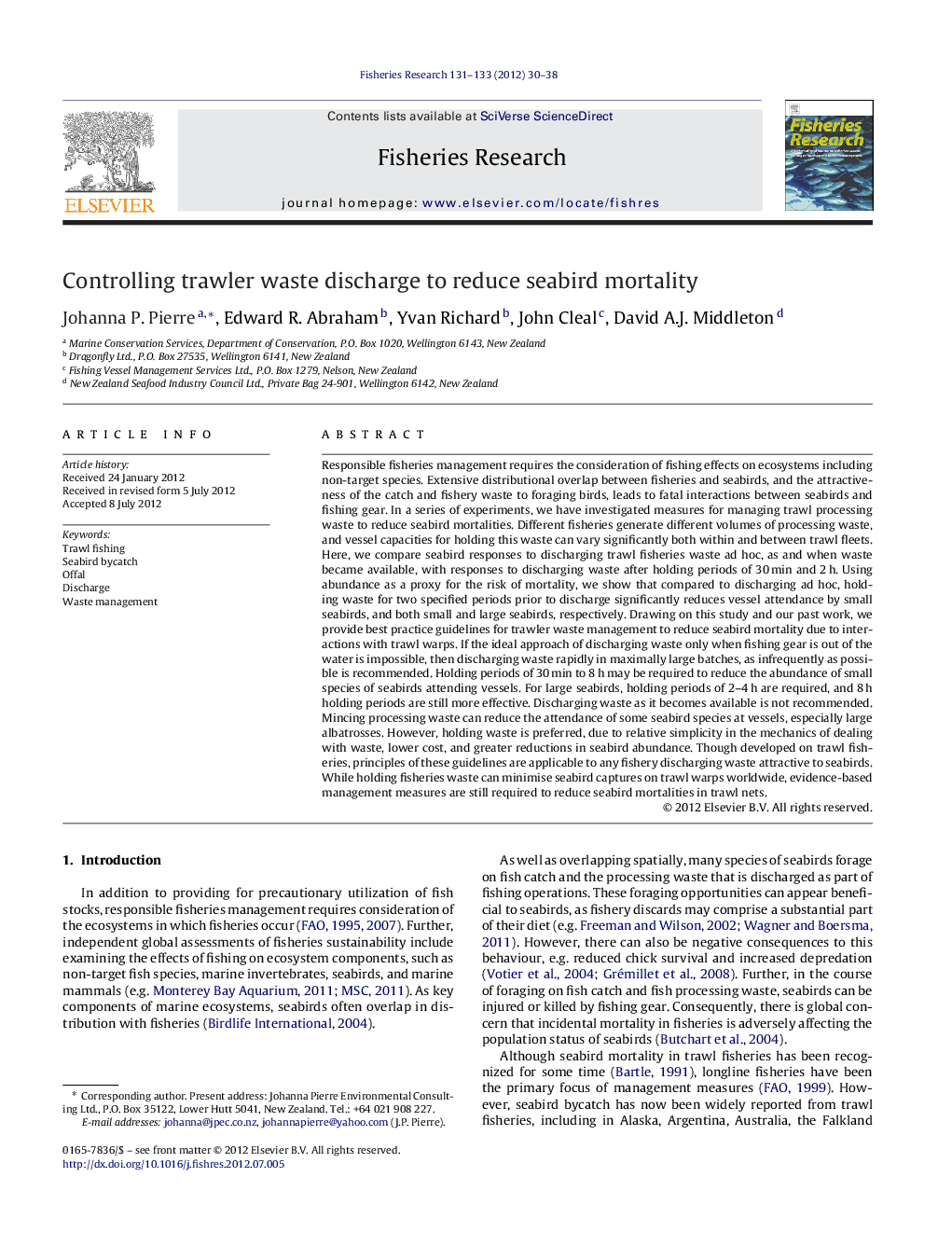| کد مقاله | کد نشریه | سال انتشار | مقاله انگلیسی | نسخه تمام متن |
|---|---|---|---|---|
| 4543282 | 1626833 | 2012 | 9 صفحه PDF | دانلود رایگان |

Responsible fisheries management requires the consideration of fishing effects on ecosystems including non-target species. Extensive distributional overlap between fisheries and seabirds, and the attractiveness of the catch and fishery waste to foraging birds, leads to fatal interactions between seabirds and fishing gear. In a series of experiments, we have investigated measures for managing trawl processing waste to reduce seabird mortalities. Different fisheries generate different volumes of processing waste, and vessel capacities for holding this waste can vary significantly both within and between trawl fleets. Here, we compare seabird responses to discharging trawl fisheries waste ad hoc, as and when waste became available, with responses to discharging waste after holding periods of 30 min and 2 h. Using abundance as a proxy for the risk of mortality, we show that compared to discharging ad hoc, holding waste for two specified periods prior to discharge significantly reduces vessel attendance by small seabirds, and both small and large seabirds, respectively. Drawing on this study and our past work, we provide best practice guidelines for trawler waste management to reduce seabird mortality due to interactions with trawl warps. If the ideal approach of discharging waste only when fishing gear is out of the water is impossible, then discharging waste rapidly in maximally large batches, as infrequently as possible is recommended. Holding periods of 30 min to 8 h may be required to reduce the abundance of small species of seabirds attending vessels. For large seabirds, holding periods of 2–4 h are required, and 8 h holding periods are still more effective. Discharging waste as it becomes available is not recommended. Mincing processing waste can reduce the attendance of some seabird species at vessels, especially large albatrosses. However, holding waste is preferred, due to relative simplicity in the mechanics of dealing with waste, lower cost, and greater reductions in seabird abundance. Though developed on trawl fisheries, principles of these guidelines are applicable to any fishery discharging waste attractive to seabirds. While holding fisheries waste can minimise seabird captures on trawl warps worldwide, evidence-based management measures are still required to reduce seabird mortalities in trawl nets.
► We examine the efficacy of fishery waste management regimes in reducing seabird bycatch.
► Discharging waste as it becomes available is not recommended.
► Holding waste for discharge when fishing gear is onboard remains ideal.
► Otherwise, discharging waste as rapidly and infrequently as possible is recommended.
► Effective waste management is critical to minimise seabird mortality in fisheries.
Journal: Fisheries Research - Volumes 131–133, November 2012, Pages 30–38